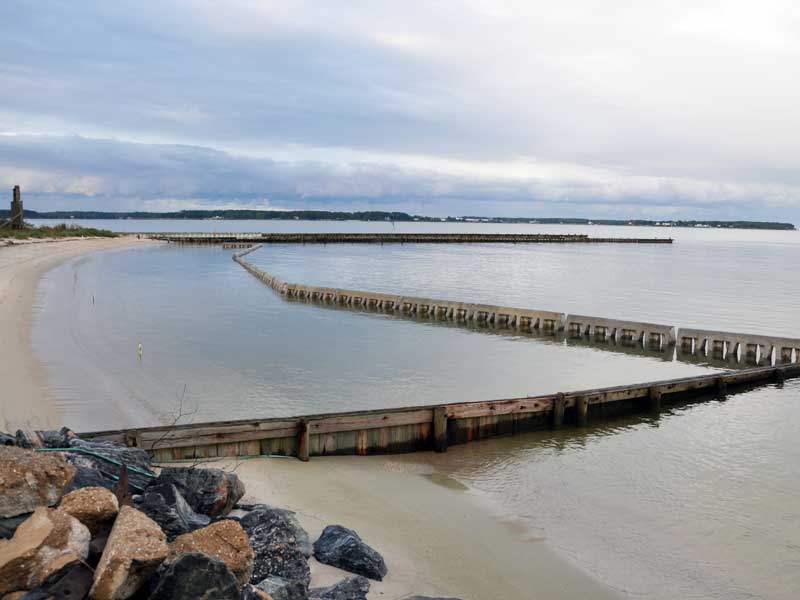Beach Prisms, designed specifically to save your waterfront property
October 3, 2011 | Beach Prisms
Everyone loves the beach. Unfortunately, in many coastal communities, beach erosion remains a constant concern, especially for home and business owners. Year after year, storms and a range of other erosive factors slowly undermine the ground stability in beach communities. Over time, erosion can lead to financially devastating consequences for property owners who reside in these areas. Manmade solutions that are safe for the environment are needed to help capture sand and slit to help restore these shorelines—solutions such as the ones that are provided by Smith-Midland.
Backed by decades of experience as industry leaders in pre-fabricated concrete, Smith-Midland possesses the expertise and production facilities necessary to provide products and service of unrivaled quality. Their innovative line of Beach Prisms is the optimal choice for providing an effective and environmentally friendly solution to beach restoration.

Any area where water meets land faces gradual erosion over time. A number of beach communities are looking for an effective remedy to this problem. Ocean Gate, New Jersey was just one of the many area affected by Super-storm Sandy back in 2012. Severe storms led to extensive beach erosion—scary experience for many of Ocean Gate’s residents. Ocean Gate’s Mayor, Paul Kennedy, notes that storm damage has become a perennial problem: “We’ve been losing beach year after year with the Nor’easters we get… so we came up with a solution that hopefully will work.” To help begin the process of beach restoration, Ocean Gate installed Smith-Midland Beach Prisms. Measuring 4ft tall by 10ft long (larger sizes are available if needed), and composed of high-strength, precast concrete Smith-Midland’s Beach Prisms boast a triangular slotted design that provides the stability and durability to withstand major storms and floods. In turn, their slotted, open design allows water to flow through the Prisms, dissipating wave energy facilitating the accumulation of sand. This design greatly reduces the erosive impact of harsh weather on shorelines, allowing natural movement of water, plant, and animal life, while preserving cumulative stores of necessary sand.
Permits for Beach Prisms installations are issued by state and federal agencies, such as the Department of Natural Resources and the Army Corps of Engineers. In some cases, Beach Prisms have been proven to reclaim lost shoreline by accumulating sand in front of and behind the Prisms. Bob White, a homeowner in Ingram Bay, Virginia states, expresses excitement over the added security provided by the Beach Prisms: “You can literally watch the waves stop in their tracks when they go through the prism. Everything just stops. The peace of mind they give you is unbelievable and irreplaceable.” Dr. M. Stephen Alistock, Chairman of the Biology Department and Director of the Environmental Center at Anne Arundel Community College, confirmed that the Beach Prisms “had practically no impact on the sensitive landward environment.”
Researchers have determined that, between 1932 and 2010, land-area change in coastal Louisiana accounts for the loss of over 1,900 square miles of wetlands. This loss continues at a rate of 25-30 square miles each year—land loss roughly equivalent to a football field of land every hour. And this isn’t an isolated problem. All rivers, bays, lakes, and oceans potentially face shoreline erosion. At once effective and environmentally friendly, Smith-Midland’s Beach Prisms provide the optimal solution for beach restoration.